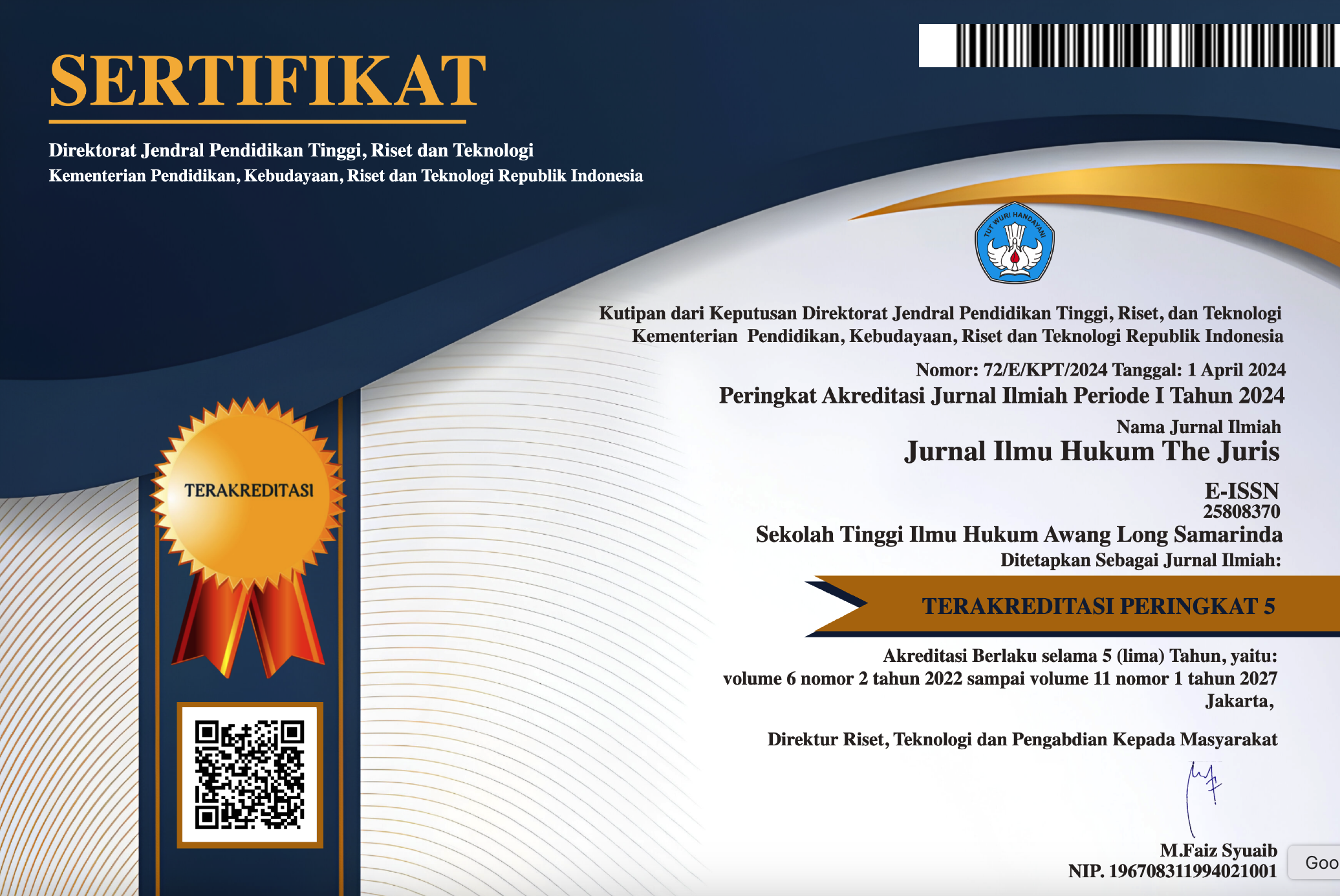PENERAPAN PIDANA TERHADAP ALIH FUNGSI LAHAN PERTANIAN PANGAN BERKELANJUTAN DI KABUPATEN BANJAR
Abstract
Banjar Regency has enacted Regional Regulation No. 9 of 2012 concerning Protection of Sustainable Food Agricultural Land, and Regional Regulation No. 4 of 2021 concerning Spatial Planning of Banjar Regency in 2021-2041. At the provincial level, South Kalimantan has enacted the Provincial Regulation Number 2 of 2014 concerning the Protection of Agricultural Land for Sustainable Food Crops. This research uses empirical juridical research or empirical sociological legal research. The criminal enforcement of the conversion of agricultural land for sustainable food in Banjar Regency is actually the Regional Government has protected agricultural land by issuing various regulations. The inhibiting factor in enforcing the criminal conversion of agricultural land in Banjar Regency is that the shrinkage of production centers is difficult to prevent because the distance of land that can be converted to non-food areas in the Regional Spatial Plan (RTRW) of South Kalimantan Province from the national road is 1,250 meters due to the lack of witness participation. Regional Spatial Planning that is valid for 20 years but can be reviewed which can be reviewed every 5 (five) years The need for synergy between local governments through agencies related to law enforcement officers in law enforcement, especially criminal law enforcement in order to provide a deterrent effect in order to stem the strong activity of conversion of agricultural land from food to non-food, in order to maintain food security in the region and even nationally.
Downloads
Copyright (c) 2022 Rico Husen Permana

This work is licensed under a Creative Commons Attribution-ShareAlike 4.0 International License.







